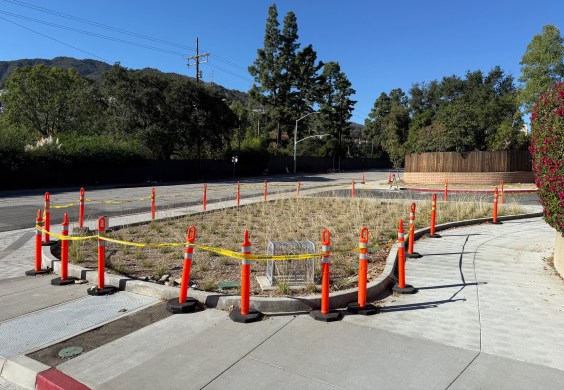Two years after the city gave Fisherman's Wharf a people-friendly redesign on two blocks of Jefferson Street, business is booming. Despite merchants' fears that removing all car parking on the blocks would hurt their sales, they now say it had the opposite effect.
The second phase of the project, which will bring a similar treatment to three blocks of Jefferson from Jones Street east to Powell Street, is taking a step forward. D3 Supervisor Julie Christensen and other city officials announced today that $1.7 million has been allocated for design and engineering for the expansion. The rest of the funds for the second phase, totaling $13 million, haven't been identified, but it could be constructed as early as 2017.

In June 2013, the two blocks of Jefferson between Hyde and Jones Streets were made safer and calmer with wider sidewalks, textured pavement to calm motor traffic, and the removal of curbside car parking. One-way traffic was also converted to two-way.
Since then, sales on the street have risen. The Fisherman's Wharf Community Benefit District surveyed 18 of the 33 businesses on those blocks, and they reported month-over-month gross sales increases between 10 to 21 percent on average:
From July through November 2013, these 18 businesses generated an additional $1.5 million dollars in gross sales from the previous year. This added approximately $140,000 more in sales tax for the city during this 5 month period.
"People are staying longer and spending more money," said Troy Campbell, executive director of the Fisherman's Wharf CBD. "Drivers are a little more cautious, I would say."
Removing car parking to widen sidewalks provided more room for crowds and made storefronts more visible, said Campbell. "You look down the street, and you don't have a string of cars that are part of the landscape. The businesses become the landscape."
"A lot of the merchants came back to me and said, you know what, I thought losing the parking was going to be a problem, but I feel like people can actually see my windows now, and they're engaging with us more."
Car traffic was also reduced on Jefferson, with the help of signage directing drivers to the more than 6,000 nearby parking spots in lots and garages. Campbell said the spots generally only fill up on the busiest days of the year, like Fleet Week and the Fourth of July.
With more drivers using the Port-owned "Triangle Parking Lot" instead, its gross revenues increased $326,000 in the 12 months ending in September 2014 compared to the previous 12 months, the CBD survey said.
Fisherman's Wharf now has more pedestrians than Times Square, based on counts taken by the three "top cameras" installed at both locations, according to the survey.
Between 2006 and 2014, the share of people who arrived by foot rose 10 percent. And people are staying longer: The share who said they spend one hour or less at the wharf declined from 11 percent in 2006 to 6 percent in 2010 to 3 percent in 2014.
Bicyclists make up 40-60 percent of the vehicle traffic on Jefferson, with about 360 bikes per hour between 12 p.m. and 7 p.m., according to the survey. No bike counts were presented from before the redesign.
The street is much safer for all the visitors who roll down Jefferson on rental bikes, the survey report says:
With street parking eliminated on two of the five blocks at the wharf under Phase I, visibility for cyclists has improved dramatically and dangers such as people pulling out of parking spots, car doors opening into the bikeway and parallel parking is now a non-issue on the Phase I blocks of Jefferson.
"Watching the pedestrians casually stroll down the wide sidewalks and watching the traffic, both bicycle and automobile, slowly move down the street has been a pleasure," said Nick Hoppe, owner of Cioppino’s Restaurant, in a statement in the survey report. "Everything is working beautifully. Everyone who worked on this project and brought it to reality should be commended."






